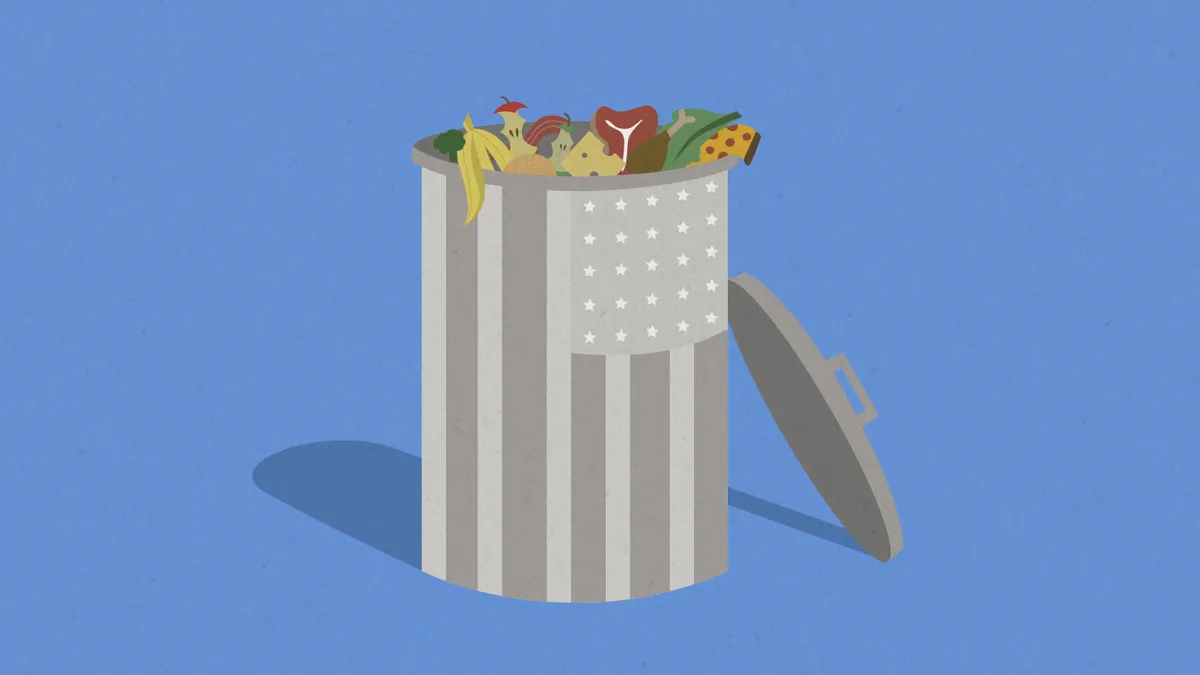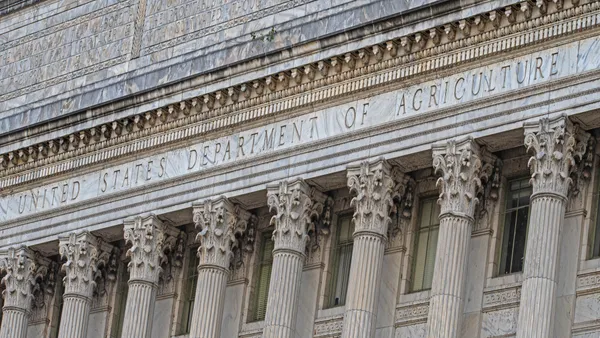Dive Brief:
- New York's Department of Sanitation (DSNY) published final rules to expand its existing commercial organics diversion mandate, with slight amendments to the originally proposed version. The rules will take effect in August, with official enforcement set for February 2019.
- These rules will cover restaurants with floor areas of at least 15,000 square feet (up from 7,000), chain establishments with at least 100 locations in the city (up from 50) and food retailers such as grocery stores with at least 25,000 square feet of floor space (up from 10,000).
- Covered businesses can comply by hiring a carter, self-transporting or processing food scraps on-site "as long as the material goes for beneficial use, such as for use as compost or in anaerobic digestion." Food recovery, via donation to third-party charities or sale to farmers for animal feed, will also count.
Dive Insight:
DSNY has estimated that about 650,000 tons of commercial food waste are generated in the city each year and told Waste Dive this new rule would cover "nearly 1,800 new businesses." About 275 of the city's largest food waste generators — stadiums, arenas, hotels, food manufacturers and wholesalers — are already covered and enforcement has been in full effect since Jan. 2017.
The second wave of businesses, and some of the haulers servicing them, raised concerns with the new policy last fall and asked DSNY to withdraw the rule. The final adjustment in coverage criteria may indicate that some of the restaurant and retail voices were heard.
Some haulers remain concerned about additional costs involved with adding organics collection capabilities if they don't already offer that service, and possibe loss of existing customers that will now be covered if they don't make that investment.
Access to adequate regional processing capacity has also been raised as a concern. Depending on the quality of the material, and whether it's been pre-processed, some composting sites may not always want it.
DSNY maintains that it has identified enough regional capacity and provided Waste Dive with a list of sites when asked in November. Aside from the co-digestion operation happening at the Newtown Creek Wastewater Treatment Plant in Brooklyn, the next closest anaerobic digesters listed are in Connecticut and Massachusetts. The list of composting facilities ranges from Pennsylvania to Massachusetts.
New capacity is currently being developed in the region and more could come if a statewide commercial organics diversion mandate passes this year. As seen recently in Los Angeles, expanding food recovery for donation can also make a difference, though that requires funding and commitment to scale up.
Prevention, recovery and recycling of wasted food have all been highlighted as economic opportunities for restaurants and retailers. Now, like in other cities, the challenge is figuring out how to expand those efforts in a financially sustainable way for all involved.















